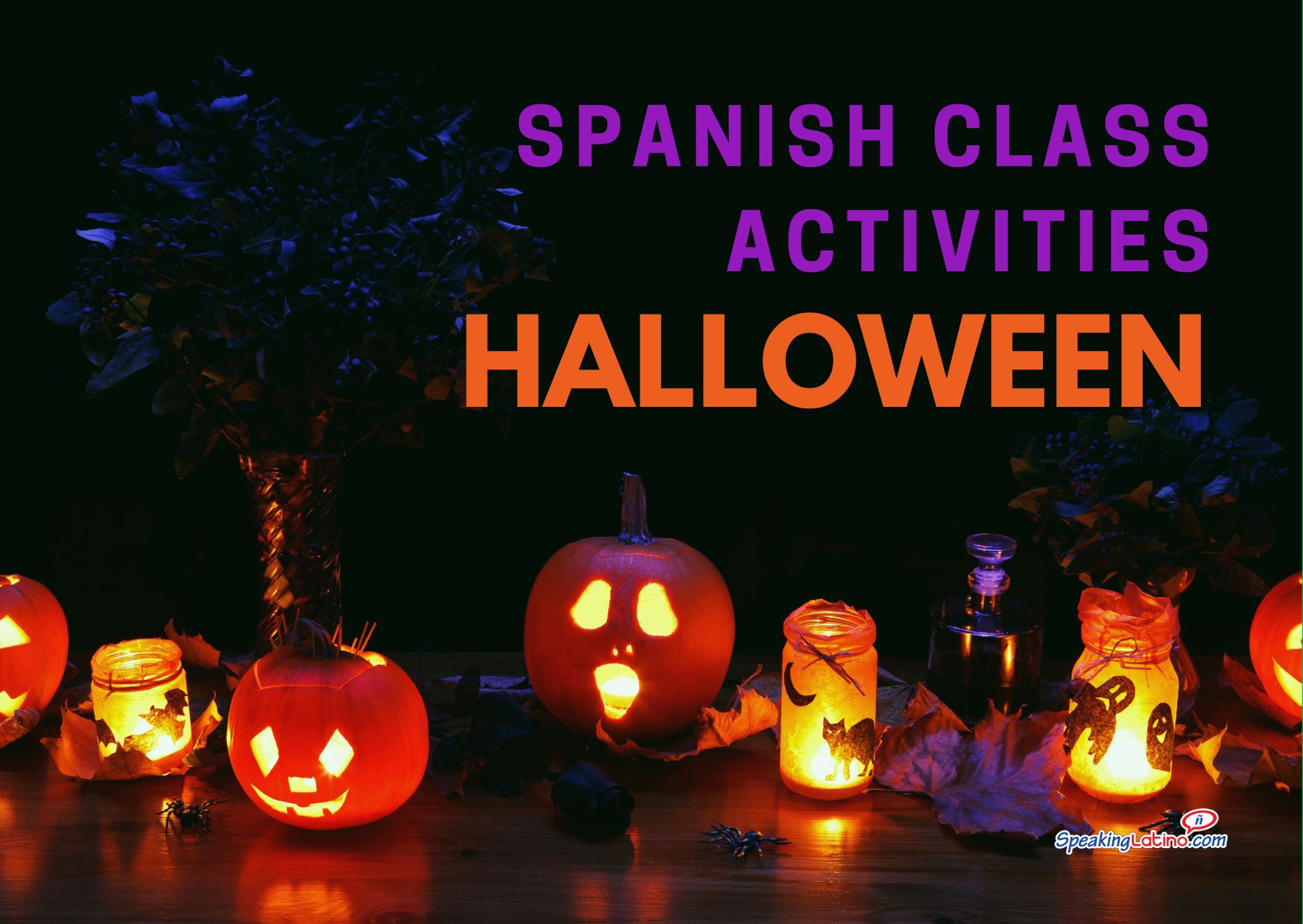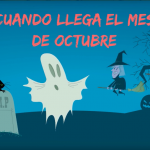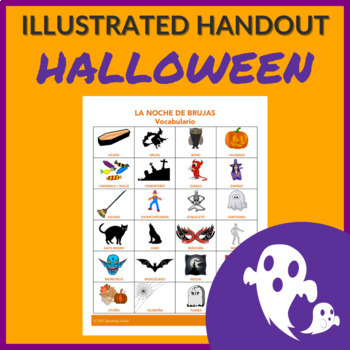
Halloween is a holiday celebrated on the night of October 31st, which typically involves activities such as trick-or-treating, attending costume parties, carving pumpkins into jack-o’-lanterns, and consuming seasonal treats. It is commonly believed to have originated with the ancient Celtic festival of Samhain, when people would light bonfires and wear costumes to ward off roaming ghosts.
Halloween is observed all over the world, but it is especially popular in the United States and Canada where it has become a time for people to come together with friends and family.
Halloween Activities and Resources for the Spanish Class:
 Cuando llega el mes de octubre Spanish Song Activities – Activity pack includes video and song files, exploratory activity, cloze activity, infinitive and present tense verbs activities, word search, crossword puzzle, jumbled lines and visual match.
Cuando llega el mes de octubre Spanish Song Activities – Activity pack includes video and song files, exploratory activity, cloze activity, infinitive and present tense verbs activities, word search, crossword puzzle, jumbled lines and visual match.
- Halloween Vocabulary Presentation with Audio – Presentation with audios: Use to introduce the vocabulary to students. It includes audio clips with the Spanish pronunciation by a native speaker.
- Halloween Spanish Vocabulary List Handout – A vocabulary list in Spanish with English translations. Includes all the 25 words used in the activities in 3 versions: editable (powerpoint) and PDF.
 Halloween Spanish Vocabulary Illustrated Handout – A letter-size handout with the vocabulary words that can be printed in full color or black and white.
Halloween Spanish Vocabulary Illustrated Handout – A letter-size handout with the vocabulary words that can be printed in full color or black and white.
- Halloween Spanish Vocabulary Printable Poster – Decorate your classroom with a poster that you can print in 3 sizes: legal, tabloid or 18″ x 24″.
- Halloween Spanish Vocabulary Word Search – In 2 versions; with the list of words in Spanish or with the list of words in English (translation exercise).
- Halloween Spanish Vocabulary Crossword Puzzle – Students translate the words in order to complete the puzzle.
- Halloween Spanish Vocabulary Spelling Activity – Students work with 16 vocabulary words and select the correctly spelled one.
Halloween and Day of the Dead
October 31st is the line that divides fall from winter, plenty from paucity… life and death.
Halloween is a celebration that has its origins from the Celts, who celebrated their new year on November 1st. The last day of the year, October 31st known as the night of Samhain in the Celtic religion, signaled “the end of summer and the harvest and the beginning of the dark, cold winter” This period of scarcity was often associated with human death.
According to History.com, “Celts believed that on the night before the new year, the boundary between the worlds of the living and the dead became blurred. On the night of October 31, they celebrated Samhain when it was believed that the ghosts of the dead returned to earth.”
Christianity spread over Celtic lands around the 9th century (just as happen in Mexico with Catholicism when Spaniards conquer the territory in the 16th century) resulting in a blend of both traditions. The Catholic All Saints Day celebration on November 1st was also called All-hallows or All-hallowmas. To Christianize the Celtic Samhain of October 31st “it began to be called All-hallows Eve and, eventually, Halloween.”
In conclusion, Halloween is the All-Saints Day Eve, which happens prior to the All Souls Day or Day of the Dead.

 Halloween Spanish Vocabulary Illustrated Handout
Halloween Spanish Vocabulary Illustrated Handout